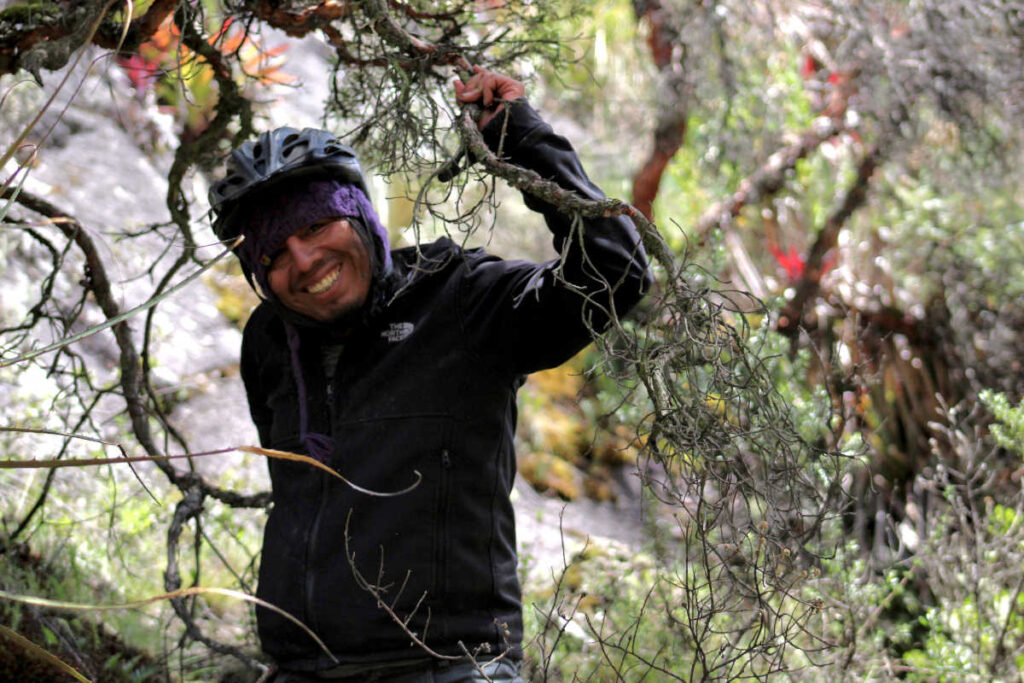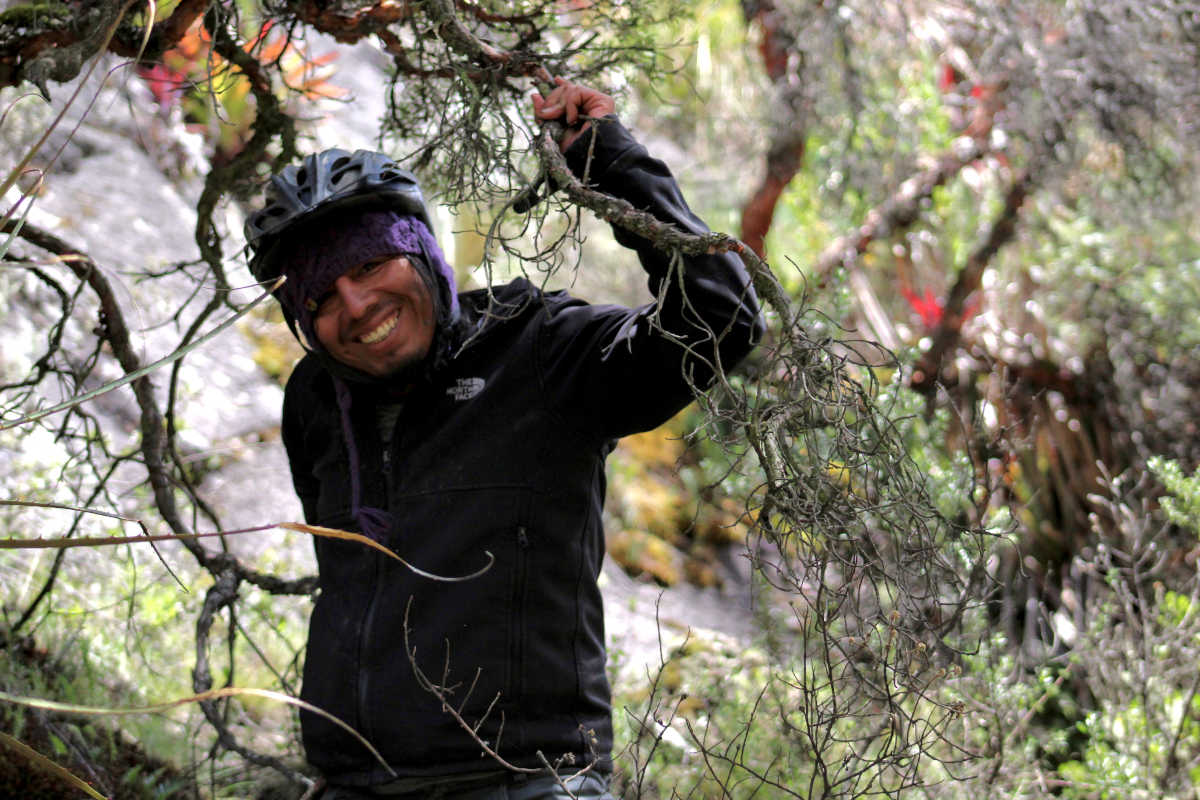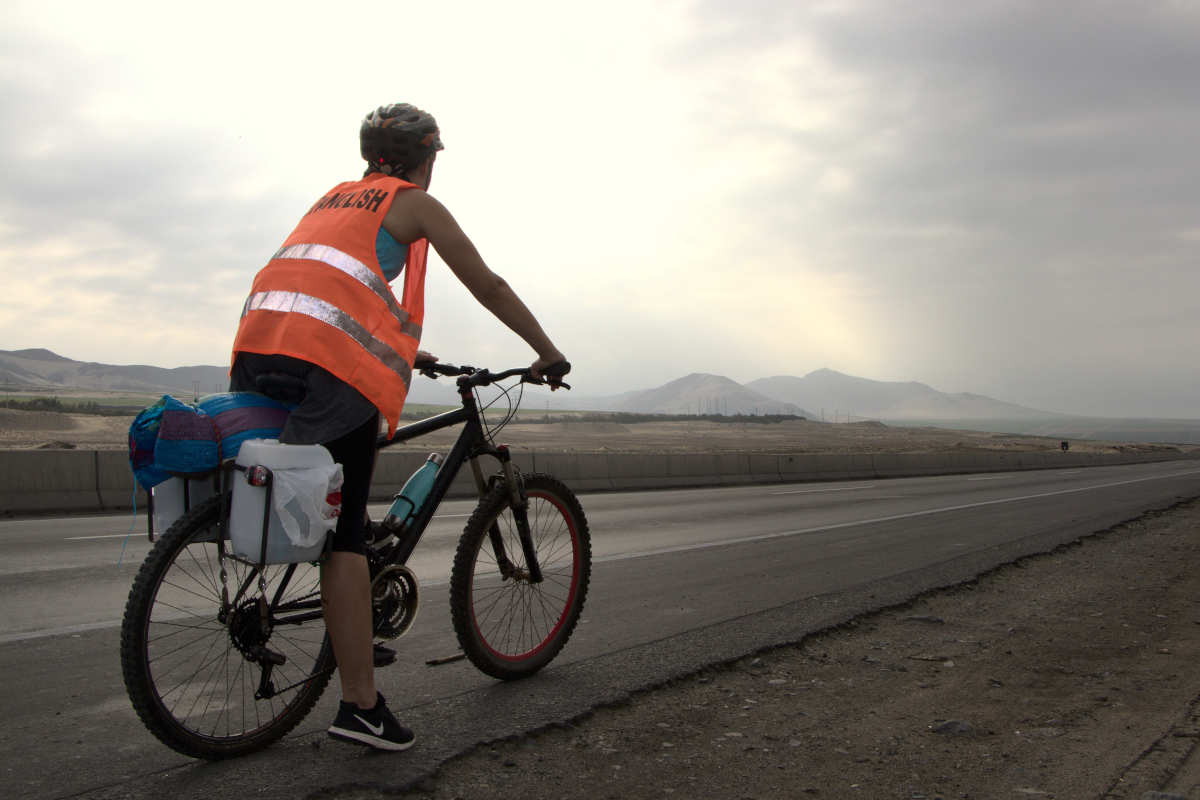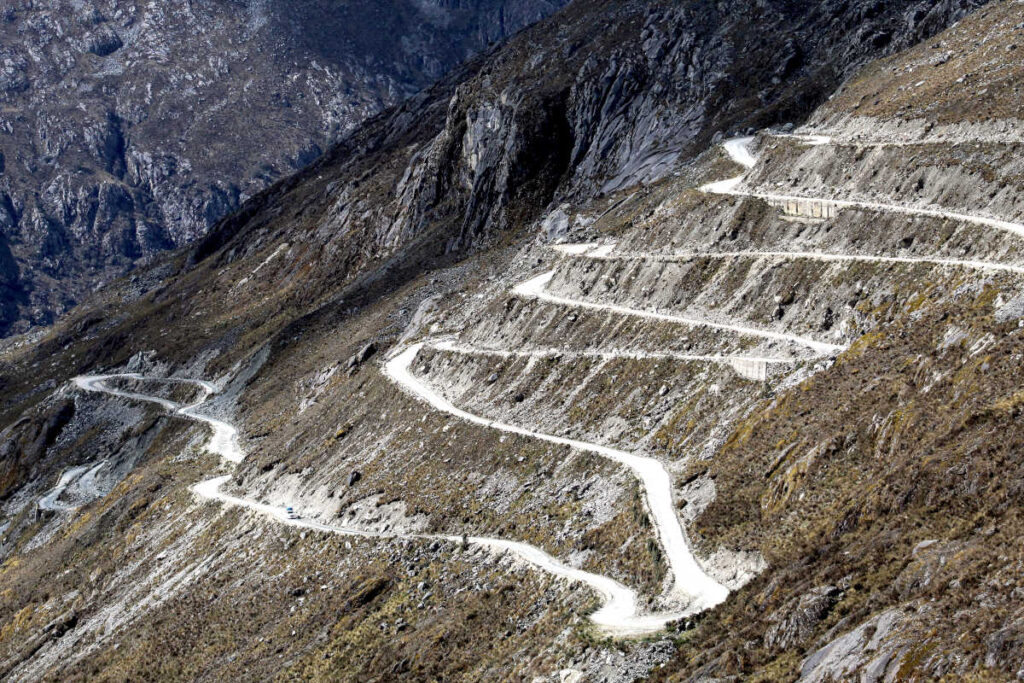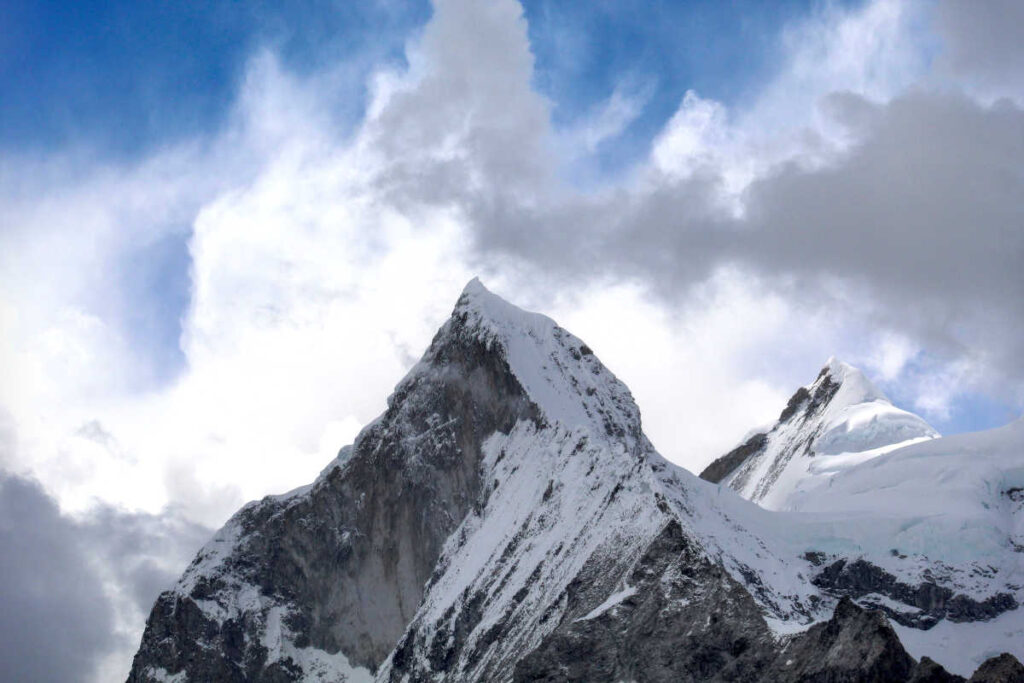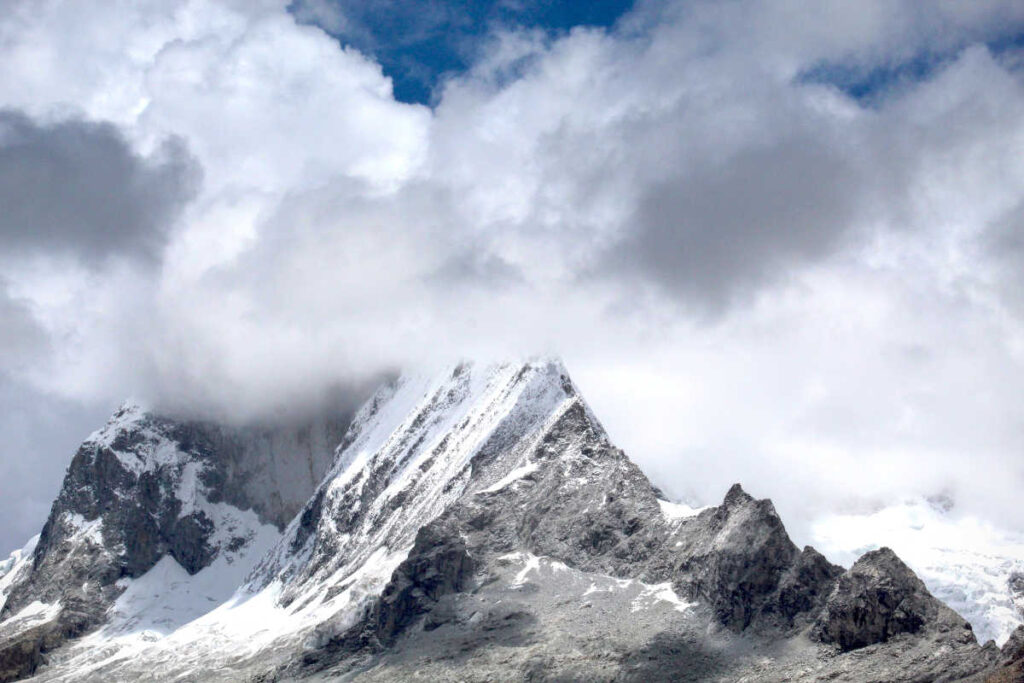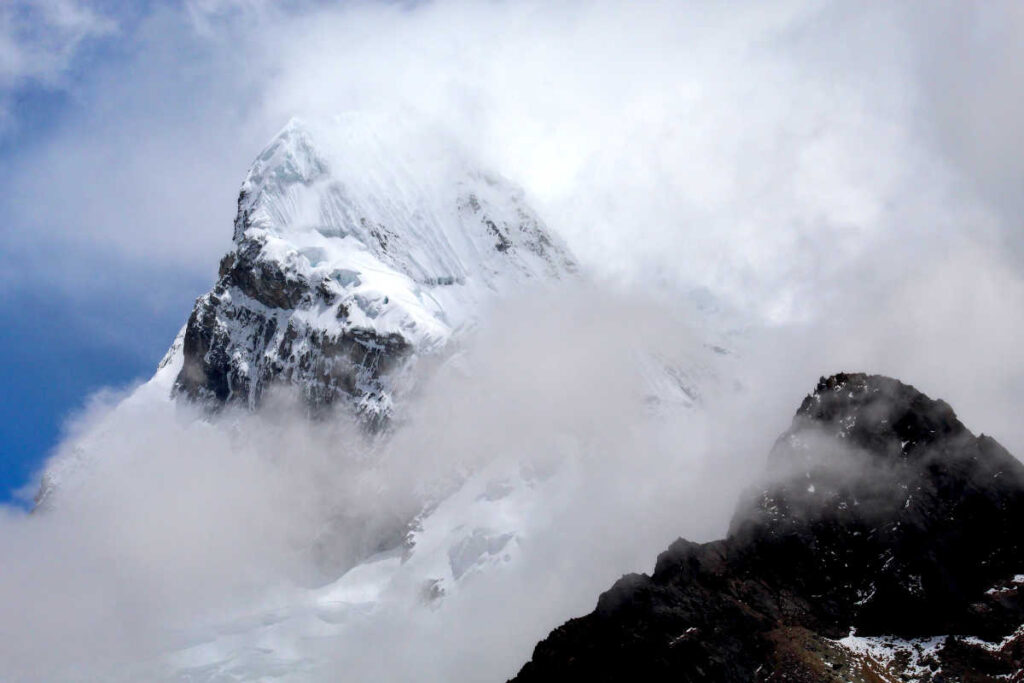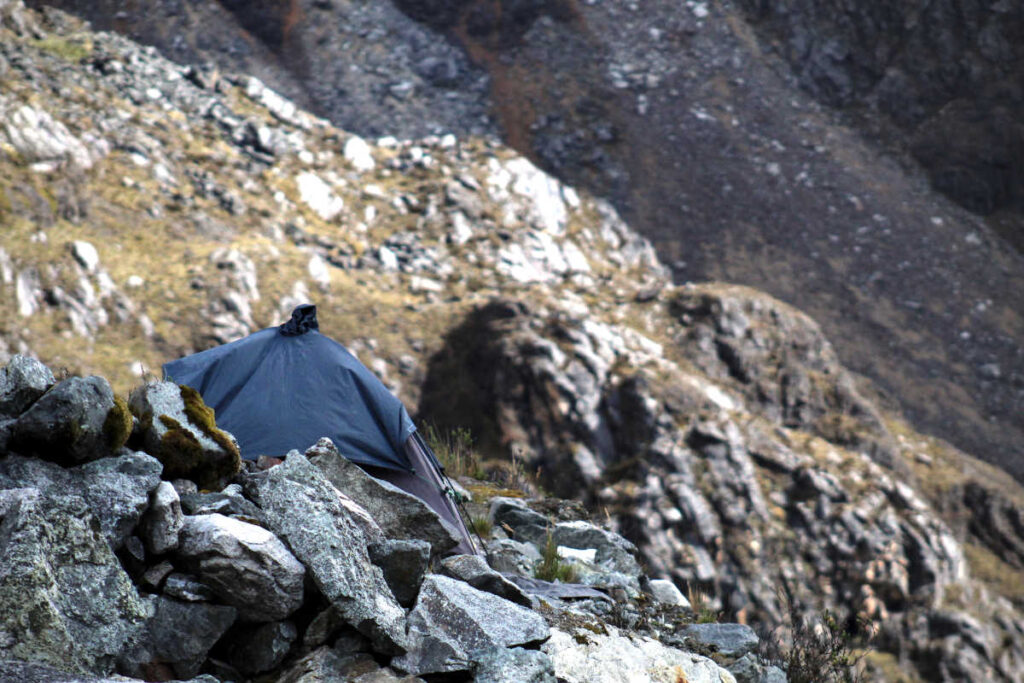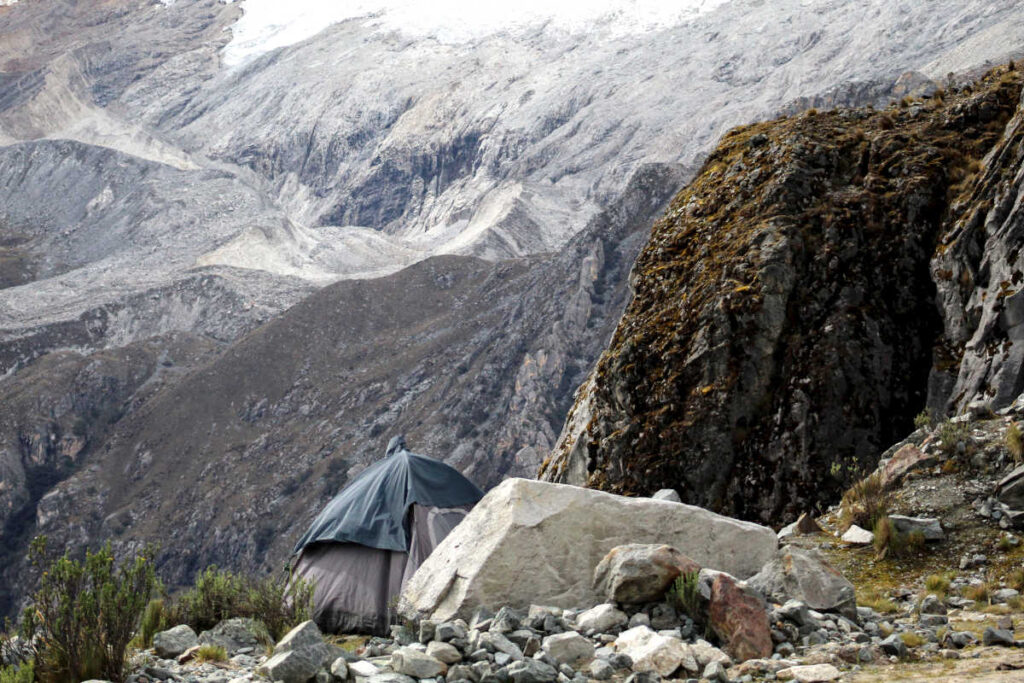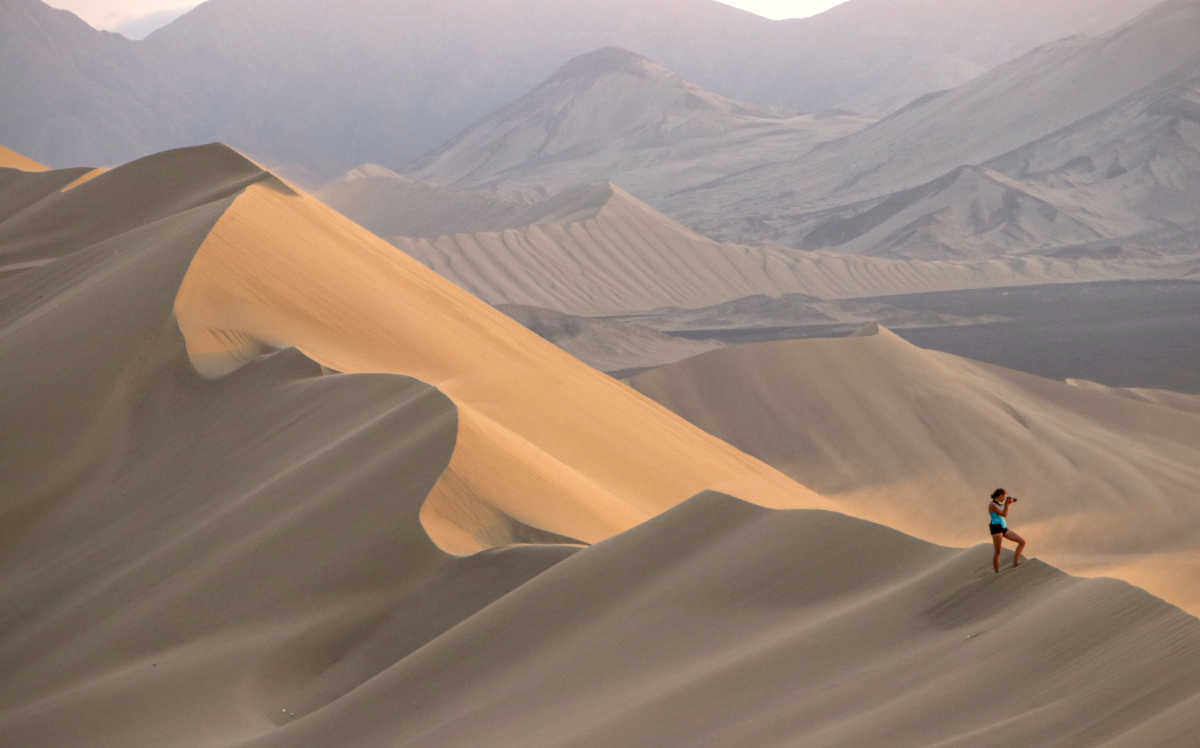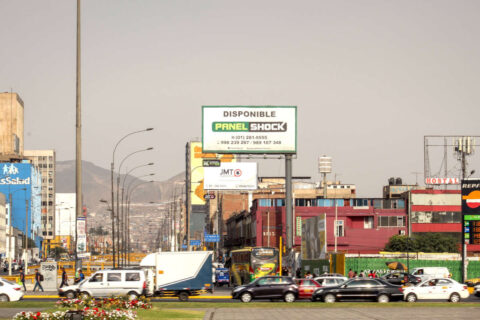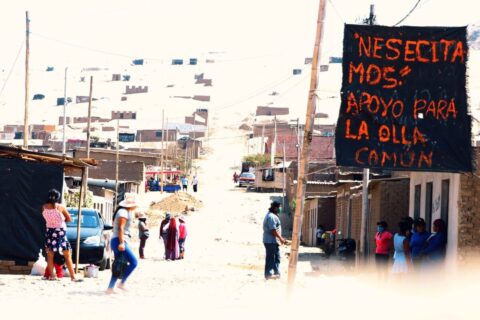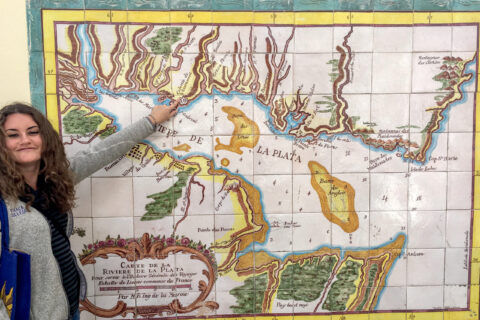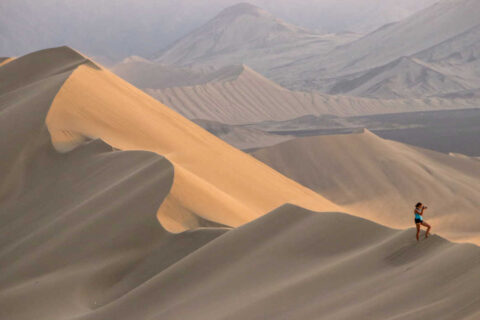AUTHOR
Sierra Vorsheim
DATE
December 13, 2020
The journey continues. This is Part II of the Peru Cycling/Hitchhiking Chronicles and covers our journey on the fourth and fifth days of our trip, from Yungay to Huaraz. If you missed Part I, you can find it at the link below.
Day 4
Yungay to Llanganuco Orconcocha
On the fourth day of our adventure, we opted to hop on a combi and ride up to Portachuelo, a point along Ancash 106 so named due to the fact that it is, quite literally, a “door” to the other side of the mountains. In order to reach it, you must drive along what is considered to be one of the most dangerous roads in the world, characterized by a long series of switchbacks with hairpin turns, dirt/rocky roads due to frequent rock and mud slides, and, of course, no guard rails. This road climbs up to approximately 4,750 meters after which, upon passing through Portachuelo, you descend down the mountains on the other side.
I was not anywhere near ready to cycle up to Portachuelo from Yungay. David had cycled the route before and it is a difficult, near continuous, uphill battle, to say the least. For this reason, we decided to grab a combi in town and have it drop us off at Portachuelo where we planned to camp for the night.
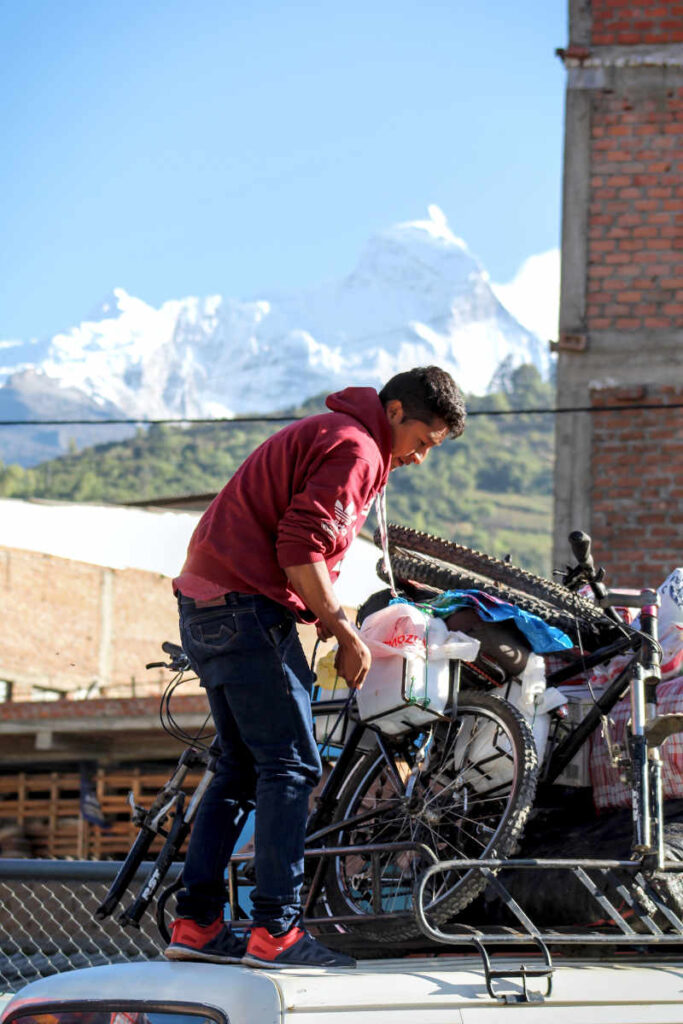
As expected, it took some maneuvering at the local station to find a combi which could accommodate our bikes. We were ready to go in one, so far as to the point where I had claimed a couple of seats inside and was bonding with some of the passengers, having them teach me some Quechua (one of the three official languages of Peru), when we were then ushered over to another combi that had more space for the bikes. The bikes were strapped to the roof, along with a plethora of other luggage that belonged to other passengers, and we were on our way.
We shared the back seat with a French-man who we conversed with as we made our way up to Parque Nacional Huascaran. He was on his way to check out Laguna 69, a popular acclimatization hike in the park. I had done the hike the year before and we chatted about the logistics of making it to the Lagoon and then back down to town, a process that requires some good timing. Without one’s own car or going in a tour, you do need to depend upon the kindness of strangers to give you a ride unless, that is, you want to trek all the way back down.
Due to the presence of us gringos, we had to make a quick stop at the entrance to the park to pay fees. This stop is rendered unnecessary on the particular combi that we took if no tourists are aboard as commuters to the towns on the other side of the mountains would often take this combi to get back home or visit friends and family.
Fees paid, we hopped back into the combi and began to make the ascent up to Portachuelo. We said goodbye to our new-found French friend at the stop for Laguna 69 and then it was another half hour or so to get there.
It’s fascinating to me, looking back now, to consider how shocking this road was the first time I rode up it, which had been 8 months prior, as compared to the second time around. It was now a familiar site… in fact, many of the most shocking roads I have ever traveled along have been in Peru. I smile wistfully now thinking of my first trip into la Sierra of Peru, to Cajamarca, and my surprise at how “dangerous” those roads were. Little did I know then.
Now, I know a bit more, and this road is certainly significantly more precarious than the road to Cajamarca, yet manageable given you give it the proper amount of respect. Respect is of the utmost importance. Be reckless in a place like this and it can be remarkably unforgiving.
The combi dropped us off right at the pass where there is an absolutely stunning view of the lagoons below and the windy road which had brought us to this point. David and I were left on our own as our fellow travelers continued on to their respective destinations.
Close to us was the looming height of Huascaran, the tallest mountain in all of Peru. In 1970, the deadly Ancash earthquake struck, resulting in a huge mass of unstable, glacial ice at the top of Huascaran to break free and form a massive, incredibly devastating avalanche that buried the town of Yungay below, killing approximately 25,000 people.
In Yungay, you can visit a memorial that sits atop where the town used to be and honors the victims of the deadly avalanche. It’s amongst one of the most catastrophic natural disasters in the history of South America.
Which brings me back to respect: more than just respect for roads or rules, it’s important to respect the nature around us. There were a number of moments during our journey where I felt this feeling of insignificance… perhaps that’s the wrong word but I felt small. I felt completely at the mercy of the elements that surrounded me. In fact, I was reminded how completely and totally we all are at the mercy of the elements that surround us. We’re no match for an avalanche or an earthquake or a tornado. The strength of these events is unlike any that we could produce or, in some instances, even fathom.
In a show of respect for Huascaran and the nature around us, we paused along the road up to Portachuelo and took a moment to honor the mountain and to give it something that mattered to us… which happened to be a piece of a chocolate bar (that was quite the commodity on this trip!). I had never participated in such a proceeding, so was confused at first as to what was happening, but David led the way and, thus, we honored this place and the mountain which stands over it.
We decided to camp out on the opposite end of the final stretch of road which led to the mountain pass. The pass itself was like a wind tunnel on this particular day and temperatures were already cold at such high altitude. We set up camp right next to the final hairpin turn before the stretch to Portachuelo and then proceeded to gleefully run about with our cameras, as this place truly is a photographer’s bliss.
After numerous photos were taken, we made dinner which consisted of ramen and cheese. At some point upon our arrival we had come to the realization that we’d made the rather upsetting mistake of misplacing some bananas, which we had purchased for a snack, on the combi and thus, now, were fruit-less. Regardless, we did the best with what we had.
Flash forward to after eating, we were relaxing in the tent, probably sometime around 5pm, when David began to feel sick. He had been starting to feel unwell and I had encouraged him to take one of those pills we had bought the day before in case we had issues with altitude sickness. Turned out my advice was too late. I was sitting on my phone, searching for a video we could watch to distract him from his ailment when he rushed to the tent opening and proceeded to vomit the entirety of what he had eaten that day.
Upon a quick assessment, during which he informed me that there was no way he could spend the night up here by Portachuelo, we decided to pack up our stuff and head back down toward town. We began to leisurely collect our belongings and pack up when I heard one of the most terrifying, and loud, noises in my life: a massive bang of thunder. A bolt of lightning had come down and struck the mountains directly behind us.
We both froze, in absolute shock and disarray: those moments felt like ages. When we came to our senses, I snapped at David, yelling at him to remove a metal light from his head, and we then rushed to pack up our things as quickly as possible so that we could get down from the pass ASAP.
Something which we had not taken into great consideration in the planning of this particular excursion was the fact that we were traveling during the rainy season. The rainy season in the mountains of Peru last from November to April, with rains generally reaching their height in January through March.
What did this mean for us? This meant that, upon the conclusion of hurriedly packing our belongings, we hopped on to our bicycles to make the descent down this, already, rather precarious road just to be greeted by a combination of hail, snow, sleet, and rain, in no particular order. All of this, of course, as we were gradually losing daylight.
David proved to be a patient and encouraging coach as I did some of my first true downhill cycling in, well, quite a while. I proceeded down the harrowing hairpin turns with as much speed and agility as I could muster through the weather, cold, and difficult road conditions with shouts of encouragement and advice from David who led ahead of me and my own mutterings to myself, during which I ordered myself to stay calm and focused.
The rain and hail battered my face, the cold chilling me to my core, my hands grew weary from constantly needing to utilize the brakes so that I wouldn’t inadvertently go too fast and hit the stones which were often spread out amongst the turns too quickly. I was frightened by the possibility of crashing the bike, unsure if I would have the will to get back up and continue the journey downhill toward town were I to be injured.
I grew relieved once we had descended to a low enough elevation that threat of being struck by lightning no longer seemed to be imminent. As we descended lower, we began to lose daylight and needed to turn on our lights to see where, exactly we were going. We were just coming upon the Llanganuco Orconcocha as the sun descended below the horizon in a spectacularly beautiful sunset, a bolt of lightning flashing across the sky. Had the circumstances been different, I would have paused to take a photo so as to record the moment.
David had cycled far ahead of me by the time I made it to the lake. By now the sun had set and darkness had descended over the park. I gazed into the void, alternating between trying to see up the road ahead and looking off toward the field by the start of the lake, where there were some buildings that could, just possibly, provide us some type of shelter from the elements.
I shouted out into the darkness, unsure if David would have continued cycling down the road on to Yungay or paused to take a chance with these buildings. I was finally greeted by shouting in return, coming from the grouping of buildings.
I wandered off in that direction, across the field, where I was relieved to find David and a park ranger who had kindly offered to allow us to stay in one of the buildings there for the night after David had recounted our ordeal.
We conversed with the ranger for a short while as we made some more ramen soup with cheese to eat for dinner. Admittedly, we both chugged water which we had filled up from the tap in the hostal we had stayed in the prior night. This was a mistake which cost both of us stomach issues for the next month.
We were both soaking wet from the rain and exhausted from our day’s adventures so proceeded to lay out all of our damp belongings, strip down, and utilize the driest of our two sleeping bags to huddle up and sleep for the night.
Day 5
Llanganuco Orconcocha to Huaraz
After a restless night tossing and turning and an assortment of nightmares of our frantic downhill cycling experience, including a remarkably vivid sequence which, if I recall correctly, involved cannibalistic children popping out from the bushes along the side of the road, prepared to make a quick meal of us, we awoke to a remarkably sunny, cheery looking morning, starkly contrasting to the conditions from the night before.
With the day looking so bright and welcoming, we decided to take full advantage and, after packing up the bikes, wandered about around Llanganuco Orconcocha to take photos and record some drone footage.
We had not yet utilized the drone on our trip and today seemed like the perfect day to do so, with blue skies and large, puffy clouds, the likes of which you never saw along the coastline of Peru.
I wandered about taking photos of birds and miscellaneous features around the lake. I had little choice but to focus on subjects which were farther away as I had brought only my long lens for the trip.
When the drone was ready to go, we began the filming process. The shot David wanted was rather straightforward: I was to cycle down the road by the lake. Great.

Take one: the shot was overexposed. A quick adjustment of the settings and it was ready to go again. Take two: whoops, just kidding. It wasn’t recording. Take three: was fantastic… to start. I cycled to the same spot I had for the last couple of shots, turned around to backtrack and then, looking up, was astonished by David’s bizarre angle choice as I watched the drone veer off to my left, flying higher and higher into the sky. Why would he want such a strange angle?
I shrugged it off and continued on my way, watching as the drone drew nearer and nearer to the edge of the cliff which bordered the valley we were in.
Wait a second.
It took a while, but it finally hit me, perhaps because of how far the drone had veered off course or due to its irregular flight pattern: the drone was being carried by the wind.
Yes, it was a beautiful, clear day but there were wicked, unpredictable wind gusts striking up and now one of them was threatening to either crash this expensive piece of equipment into the side of the cliff or into the the pond below. David managed to maneuver it away from the pond and we watched as the drone struck a scraggly tree growing out of the cliff’s side. It was almost comical, the way the drone suddenly came to a full stop and then dropped below into the branches of another tree below.
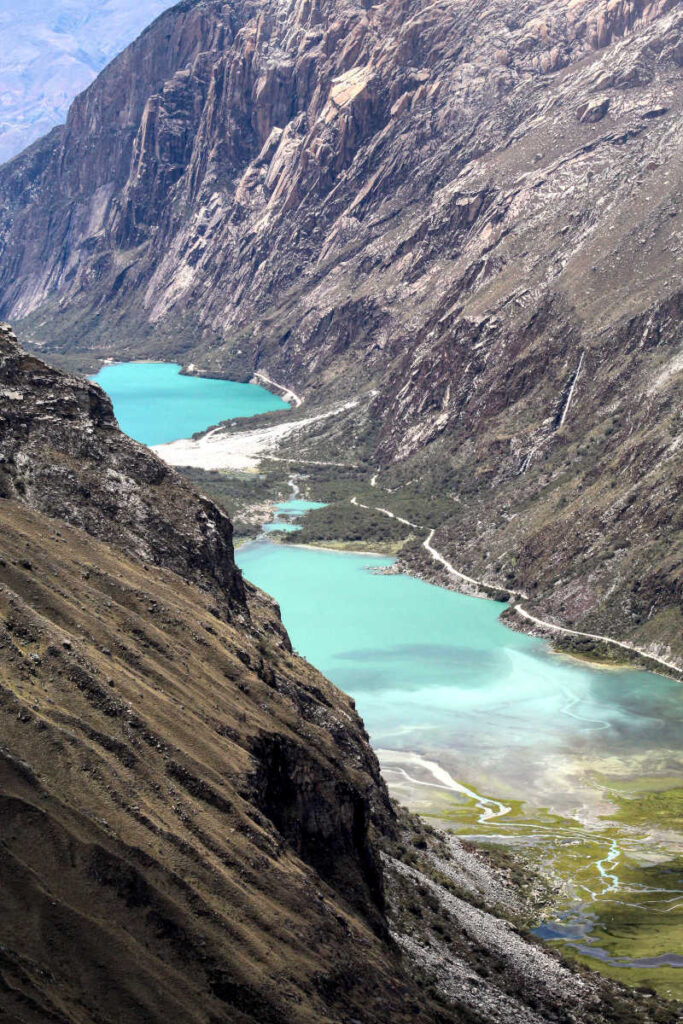
We froze and then David darted across the marshy grounds separating us from the cliff edge. I left my bike by the side of the road and followed after him.
What ensued was approximately twenty minutes worth of David prodding at the branch in which the drone was caught with the longest stick we could find and then, after that didn’t work, violently shaking the tree that the drone was stuck in. The latter proved to be a far more effective method of extracting the drone from the branches, and resulted in the drone falling squarely into my outstretched hands. The whole debacle was caught on the drone’s camera, which had never stopped filming. Solid start to the day.
We abandoned the idea of taking any further drone footage, and continued on our way by bicycle, cycling back down to Yungay, past the park entrance and downhill to the city. The greatest of our worries were the occasional guard dogs that would leap out and chase after us.
In Yungay, we… well, I, again, not having the greatest confidence in my cycling ability, decided that we should catch a ride down to Huaraz. We managed to grab a combi to get there and then, once in the city, spent some time trying to find cheap accommodation. Tensions ran high and we ended up, at last, settling for a hostal that we had stayed in before on a previous trip, despite the fact that it was more expensive than we recalled.
That night we splurged on a great meal in town, thinking that we might as well continue the splurging and enjoy the night after what had been a rough past day or so.
I’d been to the restaurant we went to on a previous trip to Huaraz. Of all things, it’s a restaurant that sells Thai, Indian, and Mexican food, called Chilli Heaven. The food there is great and, if you happen to be in Huaraz, Peru, desiring some Thai food and don’t mind splurging a bit, I highly recommend it!
We went to sleep that night warm under the covers of our bed in the hostal, a stark contrast to the night before.
